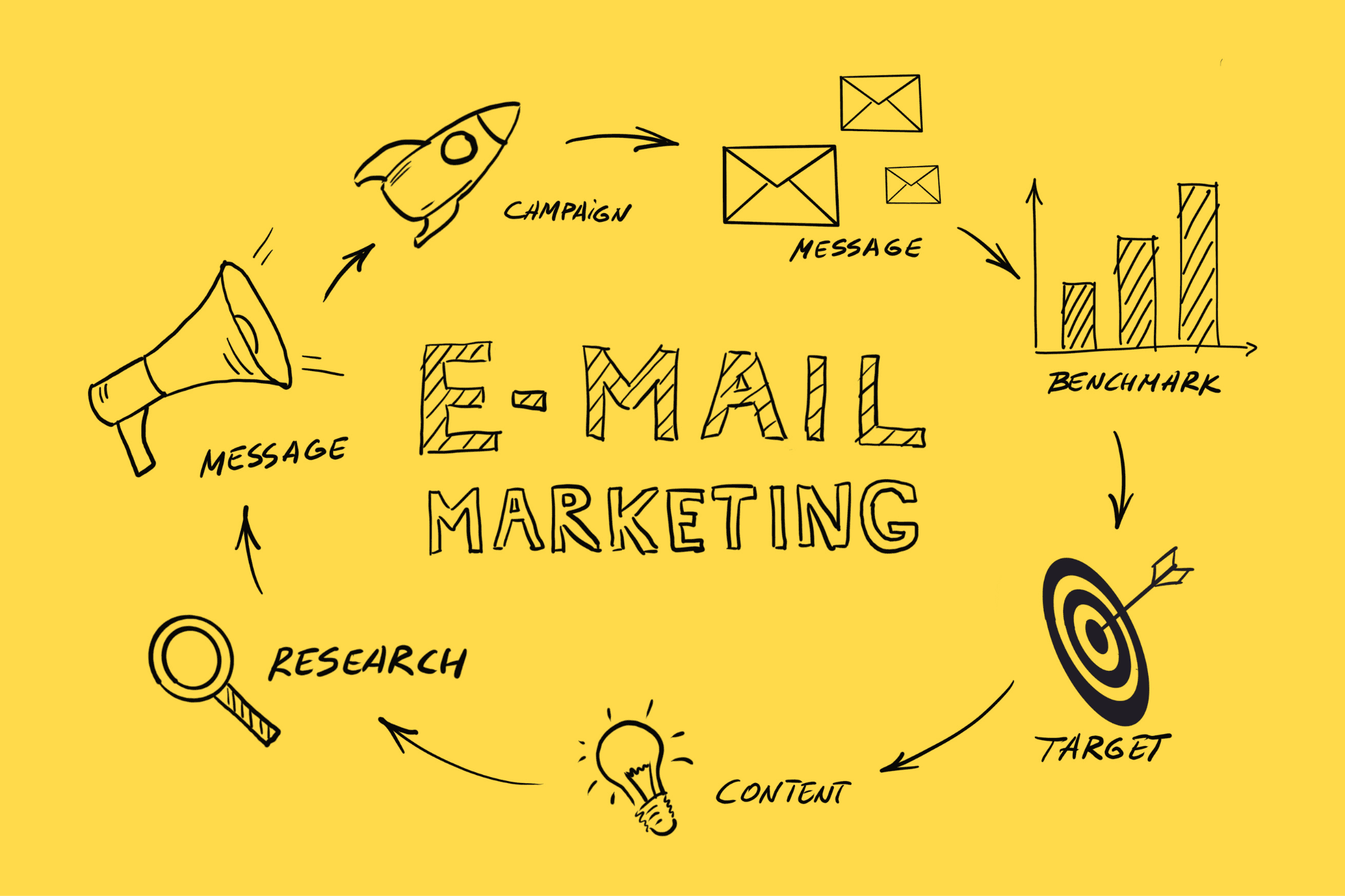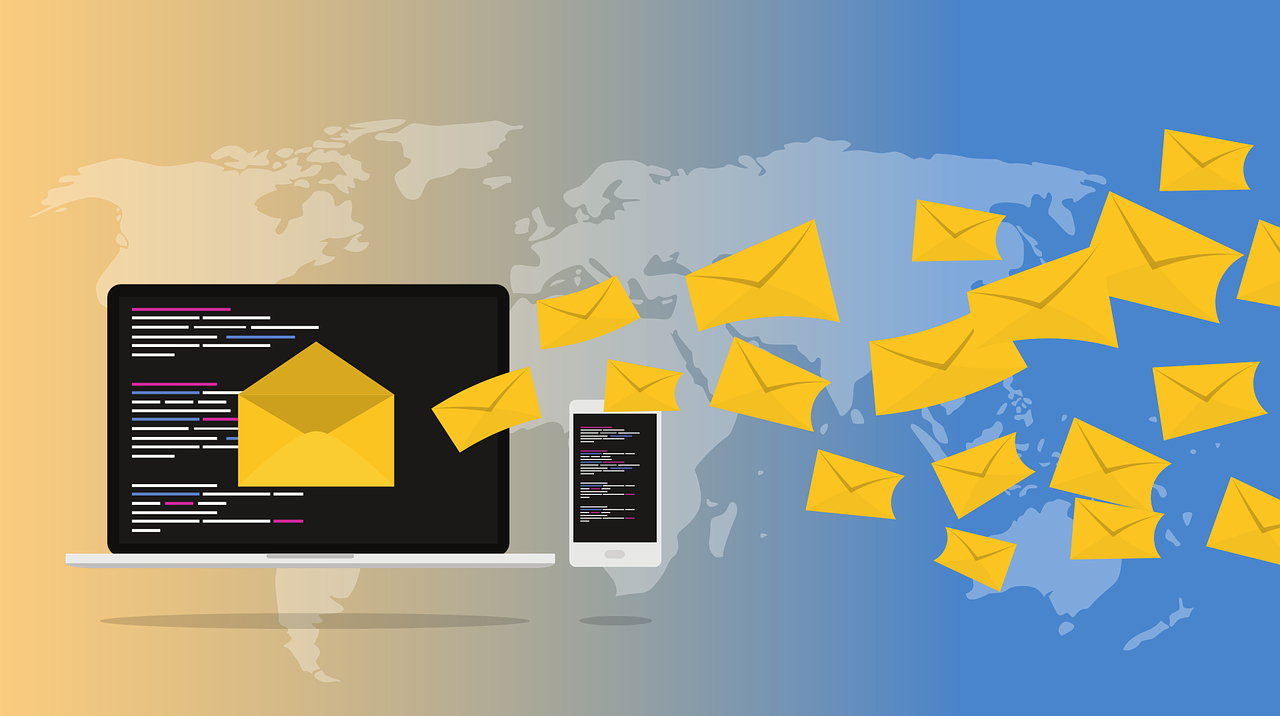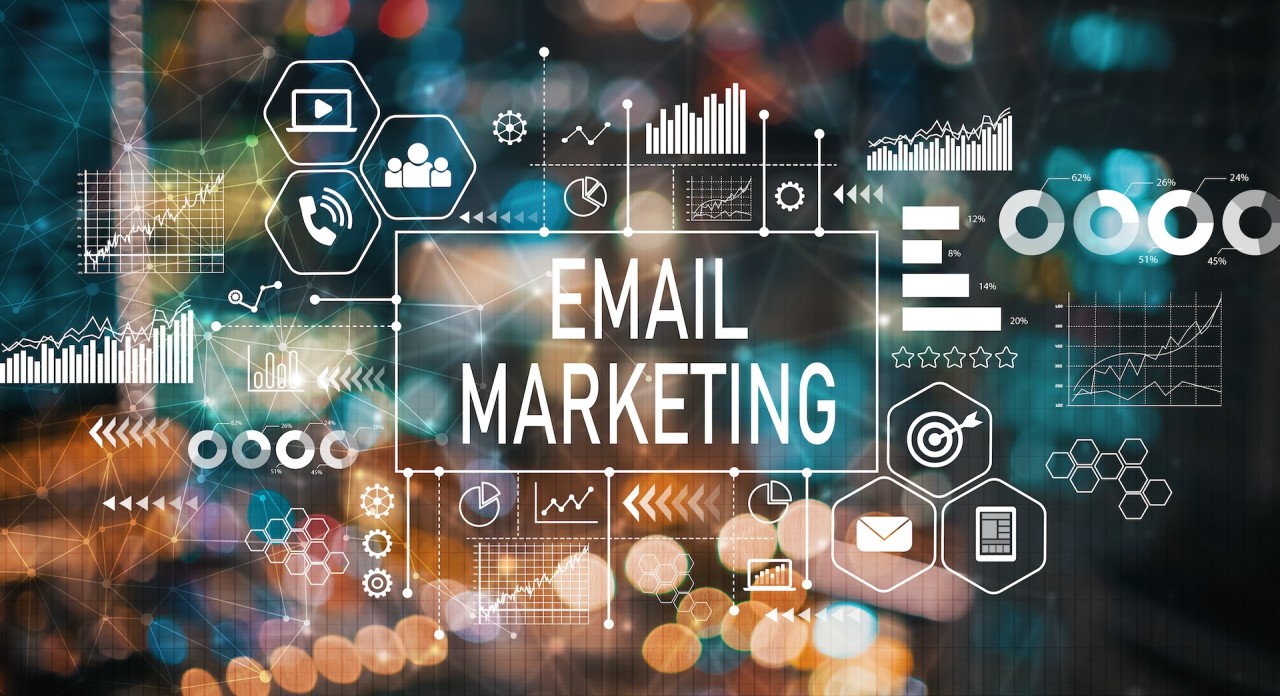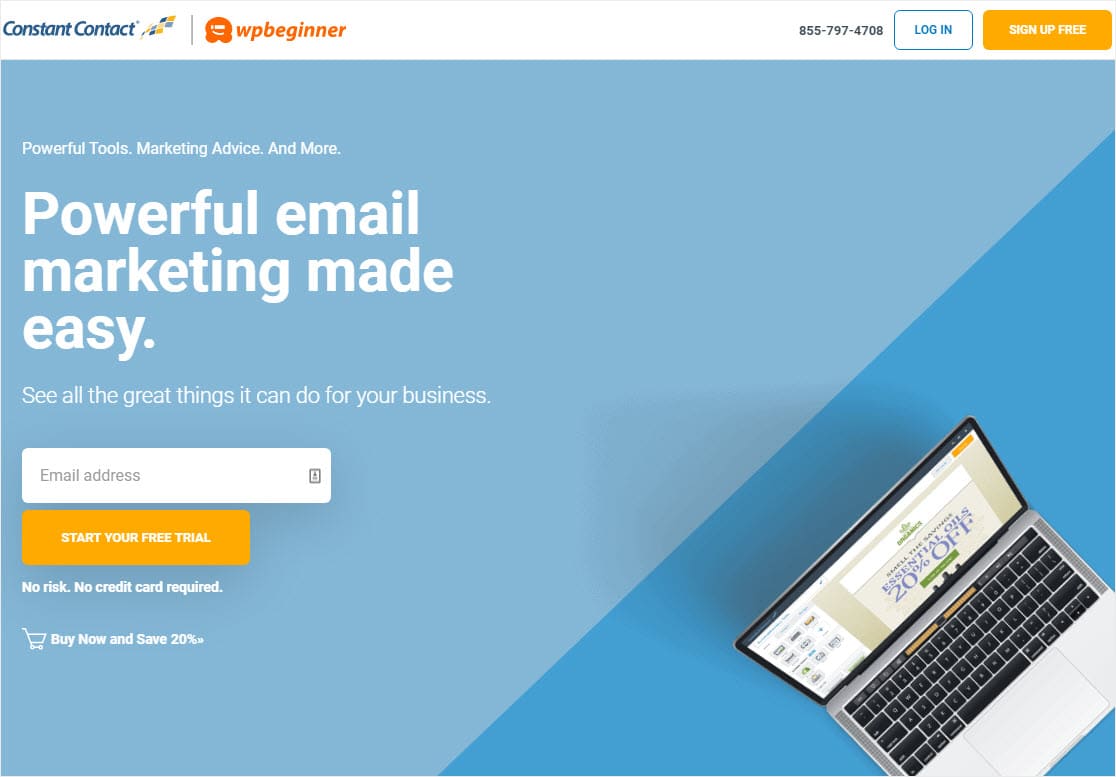In the digital age, where social media trends appear continuously, one method has stayed a constant force for customer engagement: email campaign marketing. From small businesses carving their niche to seasoned professionals growing their empires, the inbox remains a formidable playground to attract, nurture, and retain customers. This guide is a strategic tour through the landscape of email campaign marketing, tailored for small business owners, marketing professionals, and startups eager to harness the power of the email in their digital arsenal.
Mục lục
- 1. The Foundation of Email Campaign Marketing
- 2. Benefits of Email Campaign Marketing
- 3. Elements of a Successful Email Campaign
- 4. Best Practices for Effective Email Campaigns
- 4.1. Opt-In and Compliance
- 4.2. Regular List Maintenance
- 4.3. Understanding Email Analytics
- 4.4. Integrating with Other Marketing Channels
- 4.5. Mobile-Responsive Design
- 4.6. Compliance with Email Marketing Regulations
- 4.7. Email List Hygiene and Management
- 4.8. Automation and Triggered Email Sequences
- 4.9. Integration with Other Digital Marketing Channels
- 5. Measuring and Analyzing Email Campaign Performance
- 6. Conclusion
The Foundation of Email Campaign Marketing

Before we unveil the intricacies of a successful email campaign, it’s vital to understand the bedrock principles of this potent marketing tool.
The core tenet of email campaign marketing is personalization. In an era where consumers are bombarded with generic advertising, emails that feel personal and tailored to the recipient stand out. This means beyond just using the recipient’s name; it’s about crafting content that resonates with their interests, past interactions with your brand, and their position in the customer lifecycle. By segmenting your audience and designing your campaigns to speak directly to the needs and desires of each segment, you bolster engagement and foster a deeper connection between your brand and your customers.
The What and Why of Email Campaign Marketing
Email campaign marketing is the process of sending out a series of targeted email messages to promote products or services. This form of direct marketing has evolved to include automated technology that makes the communication with customers more accessible and more dynamic.
The why is simple but compelling. Email campaigns, when executed with precision, offer a direct line to the customer — a way to communicate on a personal level, ensuring the right message is delivered to the right person at the right time.
Its Importance in the Digital Marketing Mix
In the digital marketing mix, email campaigns stand out as the sturdy foundation upon which more ephemeral trends can be built. The reasons for its endurance are several. Email marketing boasts consistently higher returns on investment compared to other marketing channels. It’s cost-efficient, customizable, and easily scalable. It’s also a medium rich in data, allowing for continuous optimization and tracking of customer interaction.
Benefits of Email Campaign Marketing

If you’re not convinced of the merits of email campaign marketing, consider these compelling benefits that it offers.
Email campaigns provide an unparalleled level of direct engagement with your audience, offering opportunities for personalized communication that can significantly enhance customer loyalty and conversion rates. By segmenting your list based on demographics, purchase history, or engagement level, you can tailor your messages to meet the specific needs and interests of different segments, making each email feel personal and relevant. This customization not only increases the chances of your emails being opened and read but also significantly improves the user’s interaction with your brand, leading to higher click-through rates, increased sales, and a stronger customer relationship. Additionally, email marketing campaigns are easily measurable, giving you clear insights into their effectiveness through metrics like open rates, click-through rates, and conversion rates. This data-driven approach allows for rapid adjustments and optimization, ensuring that your strategy remains agile and responsive to the evolving preferences of your audience.
Unparalleled Reach
One of the most significant advantages of email campaign marketing is its unparalleled reach. With billions of email users worldwide, the potential audience for your campaigns is vast. Unlike social media platforms that often change their algorithms and affect how and if your content is seen, email lands directly in a recipient’s inbox. This ensures that your message has a higher chance of being seen and read, making it an effective tool for reaching a broad audience with minimal effort.
Cost-Effectiveness
Another profound benefit of email marketing is its cost-effectiveness. Compared to traditional marketing channels like television or print advertising, email marketing requires a fraction of the budget, making it an accessible tool for businesses of all sizes. The return on investment (ROI) for email marketing can be exceptionally high, with studies showing that for every dollar spent on email marketing, businesses can expect an average return of $42. This efficiency makes it a compelling choice for marketers looking to maximize their marketing budget’s impact.
Increased Brand Visibility and Awareness
In a busy digital space, your brand’s visibility can easily get lost. Through strategic email campaigns, you can keep your brand top-of-mind for your customers, whether it’s through regular newsletters, announcement emails, or exclusive deals that bring them back to your site.
Targeted and Personalized Communication
By analyzing user data and behaviors, you can create segments within your email list and tailor campaigns to resonate with these specific groups. The result is a personal touch that drives higher engagement and, subsequently, higher conversion rates.
Higher Engagement and Retention
Email marketing is not just about the one-time transaction; it’s about building a relationship with your customers. By providing value through useful content and tailored offers, you foster loyalty and encourage repeat business.
Measurable Results and Data-Driven Insights
One of email marketing’s greatest strengths is the ability to measure performance with precision. You can track open rates, click-through rates, conversion rates, and more, gaining clear insights into what works and what doesn’t.
Elements of a Successful Email Campaign

Creating an effective email campaign requires attention to several key elements that work together to achieve your desired goals.
Clear and Compelling Subject Lines
The subject line is often the first point of contact with your recipient, making it a crucial element of your email campaign. A compelling subject line should be clear, concise, and intriguing, enticing the recipient to open the email. Personalization, such as including the recipient’s name, can also increase open rates. Crafting subject lines that accurately reflect the content while sparking curiosity can significantly impact the effectiveness of your email marketing efforts.
High-Quality Content
Once your email is opened, delivering high-quality content is essential to keep your audience engaged. This content should be relevant, informative, and offer value to the reader. Depending on your campaign goals, this could range from educational content, product recommendations, or exclusive offers. Including strong calls-to-action (CTAs) within your content encourages readers to take the next step, whether it’s making a purchase, learning more about a service, or participating in an event.
Responsive Design
With the increasing use of smartphones for checking emails, ensuring your email campaign is mobile-friendly is essential. Responsive design adapts your email’s layout and content to fit the screen it’s being viewed on, providing a better user experience for your audience. This not only improves readability but also increases the likelihood of recipients engaging with your content and CTAs.
Personalization and Segmentation
Building on initial segmentation strategies, further personalization can make your emails even more effective. Beyond using the recipient’s name, tailoring content based on past interactions, preferences, and purchase history can make each email feel bespoke. This level of personalization strengthens the connection between your brand and your audience, leading to higher engagement rates.
A/B Testing
To continuously improve your email campaigns, implementing A/B testing (also known as split testing) is vital. This involves sending two variations of an email to a small segment of your audience to see which one performs better, based on predefined metrics. The insights gained from A/B testing can guide your email marketing strategy, helping you to make data-driven decisions and optimize future campaigns for success.
Timely Follow-up and Automation
Finally, leveraging automation for timely follow-ups can significantly enhance your email campaign’s effectiveness. Automated emails, triggered by specific actions such as a purchase or an unopened email, ensure that your communication is relevant and timely. This not only increases engagement rates but also helps in maintaining a consistent follow-up strategy, crucial for building long-term relationships with your customers.
By focusing on these elements, businesses can create successful email campaigns that resonate with their audience, drive engagement, and contribute significantly to their overall digital marketing strategy.
Email List Building and Segmentation
Building an email list starts with obtaining permission. Opt-in email lists ensure that recipients are genuinely interested in your content. Segmentation further refines the process, ensuring that your campaigns reach the right audience with relevant content.
Email Content Creation
Content is king, even in your email campaigns. From crafting subject lines that compel your readers to open, to creating a body that both informs and persuades, each element of your email content must be carefully constructed.
Email Campaign Strategy and Execution
Your strategy is the roadmap for your campaign. It should encompass your goals, target audience, content plan, and the tools you’ll use. Execution involves choosing the right email service provider (ESP), managing your list, and ensuring your emails are optimized to reach your audience at the right time.
Best Practices for Effective Email Campaigns

Best practices are the guardrails that ensure your email campaigns are not just effective but also respectful and compliant with email marketing best standards.
Opt-In and Compliance
A foundational aspect of creating a trustworthy and legal email marketing strategy involves ensuring all your recipients have actively opted into your email list. This not only keeps your campaigns compliant with regulations like the GDPR in Europe and the CAN-SPAM Act in the U.S but also ensures that your audience is genuinely interested in your brand. Clear, easy-to-use opt-in forms and transparent information about what subscribers can expect in terms of content and frequency establish trust and reduce unsubscribe rates.
Regular List Maintenance
To maintain the health and effectiveness of your email campaigns, regular maintenance of your email list is essential. This involves removing inactive subscribers who haven’t engaged with your emails over a specified period. Regular maintenance helps in improving your open and click-through rates, keeping your list engaged, and ensuring high deliverability. Tools and techniques like list segmentation and re-engagement campaigns can aid in identifying those who are still interested in your brand and those who are not.
Understanding Email Analytics
The success of an email campaign is not just measured by the number of emails sent but by actionable metrics such as open rates, click-through rates, conversion rates, and bounce rates. Understanding these analytics allows marketers to gauge the effectiveness of their campaigns and identify areas for improvement. Analyzing trends over time can also provide insights into subscriber behavior, helping to refine future strategies.
Integrating with Other Marketing Channels
For a holistic marketing approach, email marketing should not operate in isolation. Integrating your email campaigns with other marketing channels such as social media, content marketing, and your website can provide a seamless customer experience. For instance, promoting social media content in your emails or using emails to drive traffic to newly published blog posts can enhance your overall marketing strategy.
By adhering to these practices, marketers can ensure their email campaigns are not only effective but also sustainable and respectful to their audience. The key is to continuously evolve with the changing landscape of digital marketing, leveraging new technologies and insights to maintain the relevance and effectiveness of your email marketing efforts.
Mobile-Responsive Design
With over 60% of email opens happening on mobile, your campaigns must be designed with smaller screens in mind. A responsive design ensures that your emails are easily read and engaged with on any device.
Compliance with Email Marketing Regulations
Regulations like the CAN-SPAM Act in the United States and the GDPR in the European Union impose standards regarding transparency and the handling of customer data. Compliance is not just about avoiding penalties; it’s about building trust with your audience.
Email List Hygiene and Management
An effective campaign starts with a clean list. Hygiene practices such as regular list cleaning and list segmentation keep your campaigns targeted and your audience engaged.
Automation and Triggered Email Sequences
Automation allows you to set up emails to be sent automatically based on triggers like sign-ups, purchases, or inactivity. These triggered sequences ensure that your customers receive relevant content at the right time.
Integration with Other Digital Marketing Channels
Your email campaigns should not exist in a vacuum. They should be part of an integrated marketing strategy that includes social media, content marketing, and other channels. Consistency in messaging and design across channels strengthens your overall marketing impact.
Measuring and Analyzing Email Campaign Performance

To truly know the impact of your email campaigns, you must measure their performance against established metrics and analyze the data for actionable insights.
Email Marketing Metrics to Watch
Open rate, click-through rate (CTR), conversion rate, unsubscribe rate, and return on investment (ROI) are among the key metrics that will give you a clear picture of your campaign effectiveness.
Email Campaign Reporting and Analytics
Leveraging the reporting features of your ESP and other analytics tools, you can dig deeper into the behavior of your email recipients to understand how they interact with your campaigns.
Utilizing Data to Optimize Future Campaigns
The data you collect has no value in isolation. It’s the driver for making informed decisions that will improve the performance of your future email campaigns, leading to better results and increased ROI.
Conclusion

Email campaign marketing, when done right, is a formidable player in the digital marketing arena. With its ability to engage, retain, and catalyze growth, it’s an indispensable tool for businesses of all sizes.
We hope this guide inspires you to not only recognize the value of email campaign marketing but to take action. Whether you’re new to the game or refining your existing strategy, committing to excellence in email marketing is a choice that your business will reap the rewards from for years to come.
Now is the time to harness the full potential of your emails. Start drafting your next campaign, testing new waters, and crafting messages that resonate with your audience. Remember, in the digital age, the inbox is the space where relationships are built, and business happens. How will you make the most of it?
